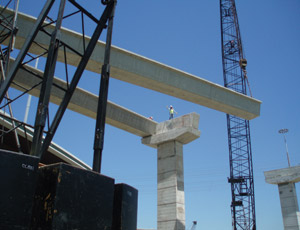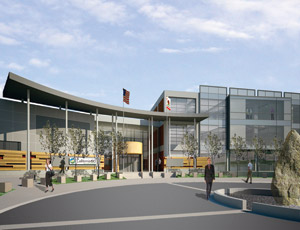It would have been easy for Dreyfuss & Blackford, project architects for the $110-million California Independent System Operator headquarters in Folsom, to go big and tall.


Created by the Federal Energy Regulatory Commission, Cal ISO is all about power: It runs the state’s electricity transmission grid. What better way to communicate power than a headquarters with big, monolithic facades and imposing vertical heights?
But Gus Fischer, Dreyfuss & Blackford Architects project manager and partner, says Cal ISO really represents is high technology – the technical ability to control and manipulate one of the most complex electrical systems in the world.
“First and foremost, Cal ISO is a technology company,” says Fischer, whose firm is located in Sacramento. “Electricity is not just power moving around on a grid in California. There’s a pretty high degree of sophistication in how they monitor the electrical flow and how they manage the grid. We wanted the building to reflect the high-tech functionality of Cal ISO, so we gave it a clean, modern design, a lot of glass and aluminum surfaces to give it that modern feel.”
Work on the 277,000-sq-ft facility began in August 2009, with Vanir Construction Management of Sacramento running the show as construction manager and the Oakland office of Clark Design-Build onboard as general contractor.
Steve Berberich, Cal ISO vice president and COO, says the agency moved into its current headquarters in the late 1990s with the expectation that the stay would be temporary. The building was short on both space and security – the latter a significant shortcoming for a facility considered a critical infrastructure site in the state.
“There’s no perimeter fences, no appropriate setbacks, things like that,” Berberich says. “Secondly, the facility is so small that we really don’t have adequate space for what we need to do. We periodically need to have public outreach meetings and can only hold one meeting at a time with the space we have.”
The new complex will have three wings, each with its own unique function. The first wing is dedicated to office space, the second for interacting with the public and the third for what Berberich called “mission-critical” activity. Security will be tightest in the third wing.
Environmental sensitivity and a sense of fiscal prudence were also key concerns for Cal ISO, Berberich says. The project is slated for LEED gold certification.
“The office wing is fairly long and narrow, allowing no more than 40 ft from any work station to the window,” Berberich says. “Natural light is a big LEED requirement. Also, we wanted the headquarters to be relatively modest in design, inasmuch as we’re a public-benefit company.”

Post a comment to this article
Report Abusive Comment